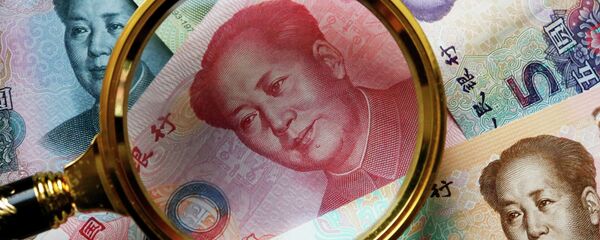Kristian Rouz — Ahead of this week’s key policy meetings of the US Federal Reserve and the Bank of Japan (BoJ), disinflationary pressures in the US, the Eurozone and Japan have stirred speculation of a possible expansion in the existing monetary stimulus programs, undertaken by Frankfurt and Tokyo.
The architecture of international finance supports excessive financialization of capital, and in such circumstances, measures of monetary policy alone are insufficient to accelerate inflation and address structural weakness in the advanced economies. The central banks-provided liquidity aimed at bolstering core prices indices in their respective nations usually ends up in the higher-yielding financial markets.
“Central banks are playing catch up with what the market has known for some time — that global growth is slowing,” Jason Daw of Societe Generale in Singapore said.
At this point, while the Eurozone’s economy is performing relatively well due to the prosperity in German manufacturing supported by a trade surplus, Draghi’s comments regarding adding more stimulus are largely seen by market participants as an alarming indication of a yet another loosening in monetary policies coming.
The latest episode in central banks’ ongoing ‘monetary wars’ was last week’s People’s bank of China (PBOC) cuts in deposit rates and base interest rates by 0.25%, accompanied with further cuts in reserve requirements for commercial banks by 0.5%. Consequently, financial markets soared in mainland China and abroad, but the measure had little to no impact on the real economy. Global oil prices, the international indicator of the pace of economic expansion, were flat at $48/bbl despite the supply-side stagnation, indicating slack on the demand side as well.
In Japan, consequently, the Chinese events stirred more speculation of BoJ easing, further emboldened by the ECB and US Fed’s dovish approach to their respective monetary policies. The abundance of central bank-provided cash coupled with weaker national currencies has become a key factor of international competitiveness. As the yen strengthened on Japan’s solid international trade figures, the domestic market pressured the BoJ for further liquidity injections.
While Tokyo attempts to resist the financial corporation’s pressure, with PM Shinzo Abe’s advisor Etsuro Honda saying additional BoJ monetary easing is ‘not necessary’, chances are high it will eventually happen. Japan’s manufacturing data are set to arrive later this week, and should they indicate a sign of weakness, the pressure for further easing will be impossible to stop.
Meanwhile, the European Central Bank is facing similarly heavy market pressure in favor of more monetary easing. Although Mario Draghi declared back in September 2014 the ECB was ‘at the lower bound’ of interest rates, yet another wave of liquidity injections might follow as soon as in December, albeit the already negative Eurozone’s deposit rates. The official reason for possible easing is lingering disinflation; however, the PBOC experience has demonstrated that looser monetary policy hardly affects inflation in the real economy as most capital moves into the higher-yielding financial transactions.
“While inflation is this low on a global level, central banks will step on the gas again and elevate asset prices for the foreseeable future,” Jim Reid of Deutsche Bank said. “This leaves huge gap risk lower for financial markets, but that’s more of a problem for when central banks are unable or unwilling to act.”
The main hazard in the excessive and often voluntary loosening in central bank policies here and there is the increased volatility and profitability of financial market operations. The more profitable the financial sector becomes, the more capital it draws from other sectors of economy, eventually overheating. Central bank stimulus policies support this tendency in the first place, having negligible, if any, effect to growth and inflation. That said, global financials’ pressuring of central banks into allowing more liquidity in the economy is a massive threat to the overall global economic outlook.






